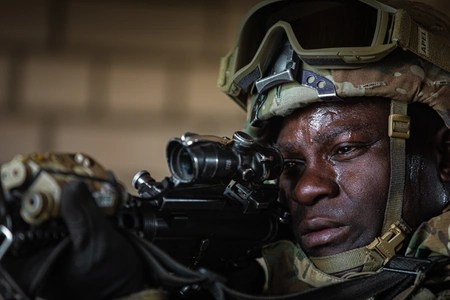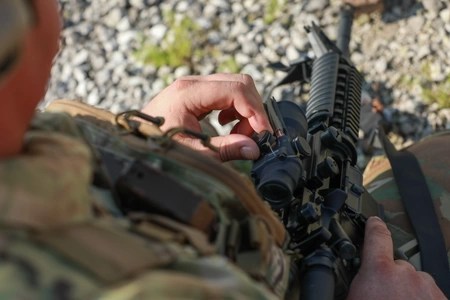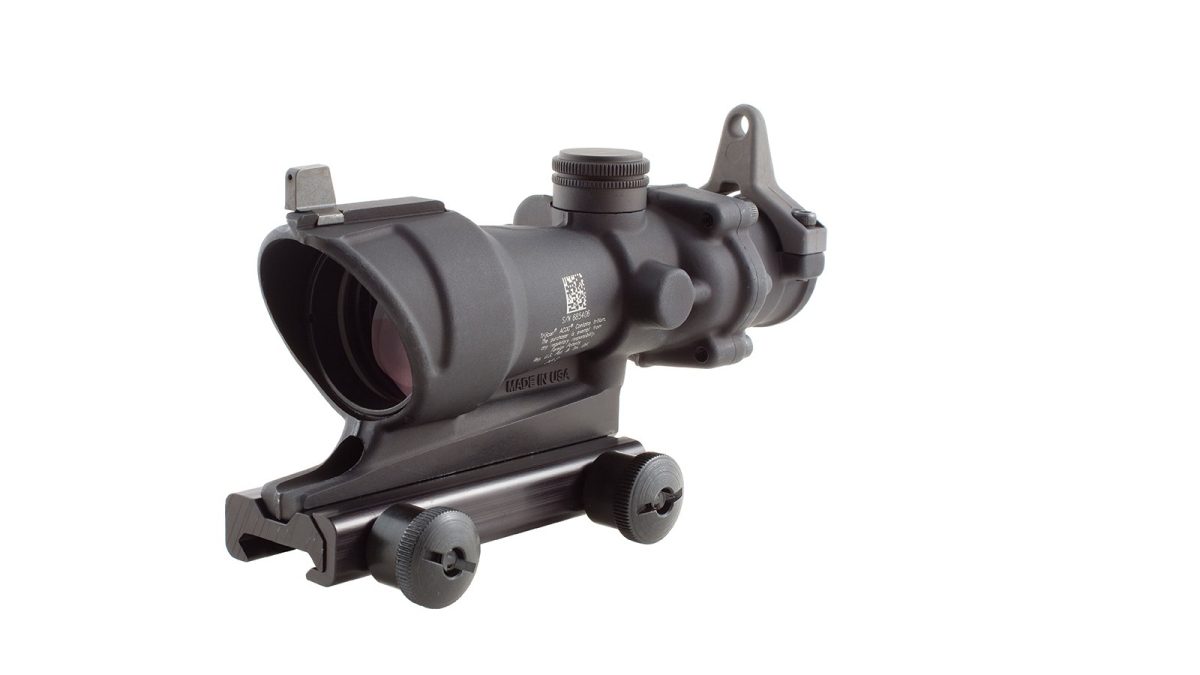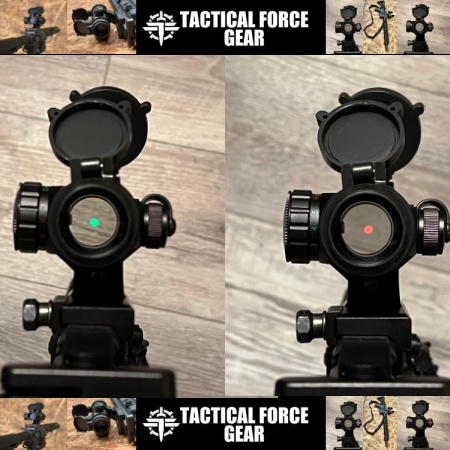You can spot it from a mile away, that signature silhouette perched atop an M4, the unmistakable profile of a Trijicon ACOG. It’s a fixture in modern American combat history, a piece of glass and aluminum that’s become as iconic to the Global War on Terror as the KA-BAR was to World War II. But the ACOG didn’t just appear overnight. Its story is one of American ingenuity, battlefield necessity, and the relentless pursuit of durability in the harshest environments on Earth.
Origins: Built for Battle, Not the Range
The Advanced Combat Optical Gunsight, or ACOG, was born in the 1980s, brainchild of Trijicon founder Glyn Bindon, a South African-born engineer with a vision for optics that didn’t rely on batteries or babysitting. He created a rugged, fixed-power scope using tritium and fiber optics to light up the reticle in all conditions, sunlight, shadow, or total darkness. No switches. No nonsense. This was undoubtedly gear for people who couldn’t afford to wonder if their optic was going to work. It wasn’t long before the U.S. military took notice.
What Bindon developed was a game-changer. His approach emphasized simplicity and dependability. While other optics demanded electronics, adjustments, or constant maintenance, the ACOG operated on a “set it and forget it” philosophy. Fixed magnification meant fewer moving parts, and the dual illumination system meant your reticle was always ready, glowing red or amber by day, and still visible when the lights went out. For soldiers and Marines who had other things to worry about, (namely, staying alive), this reliability became a quiet revolution in combat optics.
Into the Sandbox: GWOT and the Rise of the ACOG
By the early 2000s, the ACOG had found its home atop the M16A4s and M4s of U.S. Marines and soldiers heading into Iraq and Afghanistan. The Marine Corps, in particular, fully embraced the optic, eventually issuing the TA31RCO as standard gear. The reason was simple: in a fight where first hits mattered, the ACOG gave warfighters reach, clarity, and rapid target acquisition. The optics 4x magnification gave American troops a major edge in the open terrain and mountainous regions where insurgents often took potshots from 300 meters and beyond.
Urban fighting in Fallujah and Mosul showed a different challenge, quick transitions between close quarters and long corridors, but the ACOG held its own. While it wasn’t a red dot, the wide field of view and Bindon Aiming Concept allowed users to shoot with both eyes open, making it surprisingly effective in an urban environment. It wasn’t perfect for every situation, but it was dependable, and that made it beloved.

Durability Is Doctrine
The ACOG isn’t just “rugged”, it’s nearly mythic in its ability to take punishment. There are stories, borderline legends at this point, of optics taking frag and still holding zero. Dropped from Humvees. Bounced off compound walls. Submerged. Sandblasted. Frozen. In nearly every case, the optic kept functioning. In the hands of grunts and trigger-pullers who don’t have the luxury of babying their gear, that kind of resilience becomes gospel. You’d hear guys say things like “you can use it like a hammer”, and they weren’t joking. The forged 7075-T6 aluminum housing and bonded glass made the ACOG feel more like a component of the rifle than an accessory. You didn’t worry if it could handle a patrol, you worried if YOU could.
Red, White, and Reticle
What makes the ACOG uniquely American isn’t just its manufacturing origin or military contract. It’s the philosophy behind it: build it once, build it right, and build it to serve the person who wears the flag on their sleeve. For a long stretch of war, it was the optic that watched over thousands of Americans doing the hardest job on Earth. It wasn’t just a tool, it was a symbol. Many ACOGs shipped with tiny scripture references etched into the housing, a quiet nod to the company’s values. That stirred some political debate stateside, but in the field, most troops didn’t care. What they cared about was this: when rounds started flying, the ACOG was clear, consistent, and unbreakable. It never blinked. In a world where uncertainty can get you killed, that counted for everything.

The Legacy Lives On
Today, the ACOG shares the stage with LPVOs and red-dots, and Trijicon has moved into new terrain with optics like the VCOG. But the ACOG still holds its ground, often literally. It’s a combat optic that was forged in real fire, one that represents a unique moment in U.S. military history where tech and grit met in the middle.
The ACOG is not the trendy choice, it isn’t flashy, but it works. It’s still the choice for countless military units, LEO teams, and civilians who understand that durability isn’t a marketing term, its a survival trait. The ACOG was tested in sand, blood, rain, and recoil. And whether you’re ringing steel with one, or prepping for the next trip to the sandbox, it’s a reminder of a time when gear was made to outlast the warfighter, and sometimes did.
The ACOG is a piece of American military history that you can still mount on your rifle today. It’s stood the test of war, of years in the field, and of evolving doctrine. Through it all, it kept doing what it was made to do, help the good guys win gunfights. If you ever served with one, you already know that, and if you haven’t yet, it’s worth understanding why so many of us trusted it when trust was the only thing we had.
Read the full article here


